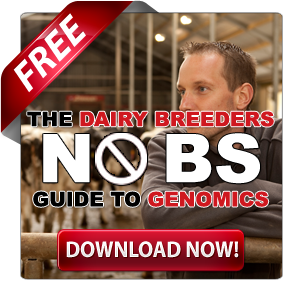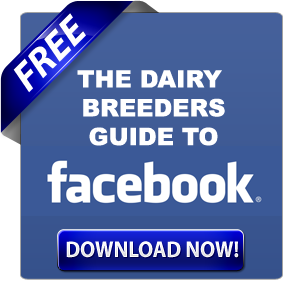Butter soars, cheese plummets: CME dairy markets in turmoil. Discover how savvy producers are turning market chaos into a strategic opportunity.
EXECUTIVE SUMMARY: The March 5, 2025 CME dairy report reveals a market in flux, with butter prices surging while cheese markets face a dramatic downturn. The unprecedented 9-cent premium of barrels over blocks signals a fundamental shift in cheese demand patterns, challenging traditional production strategies. Class III milk futures plummeted to .36/cwt, squeezing producer margins as feed costs continue to rise. Global factors, including increased New Zealand production and competitive EU butter prices, add further complexity to the U.S. dairy landscape. This market volatility demands immediate action from producers, with opportunities emerging for those willing to adapt their component strategies and explore Class IV markets.
KEY TAKEAWAYS:
- Butter prices climbed 3.25¢ to $2.2825/lb, defying overall market weakness
- Cheddar blocks fell 11.23% week-over-week, reflecting significant inventory pressures
- The block-barrel price inversion (-9¢) signals a shift towards processed cheese demand
- Class III milk futures dropped sharply to $17.36/cwt, while Class IV held relatively steady at $18.48/cwt
- Rising feed costs (corn +4¢, soybean meal +$6) further challenge producer margins, necessitating proactive risk management strategies

Today’s CME dairy markets delivered mixed signals, with butter prices climbing sharply while cheese markets continued their downward spiral. The block-barrel price inversion deepened, signaling a fundamental shift in cheese demand dynamics. Meanwhile, Class III milk futures plummeted to multi-month lows, and rising feed costs are squeezing margins. Dairy producers must adapt quickly to navigate these challenging conditions.
Key Price Changes and Market Trends
| Product | Closing Price ($/lb.) | Change (¢/lb.) | Trades | Bids | Offers |
| Butter | 2.2825 | +3.25 | 1 | 7 | 2 |
| Cheddar Blocks | 1.6150 | +1.00 | 5 | 4 | 1 |
| Cheddar Barrels | 1.7050 | -2.50 | 2 | 1 | 1 |
| NDM Grade A | 1.1800 | NC | 0 | 1 | 1 |
| Dry Whey | 0.4900 | -2.00 | 5 | 1 | 3 |
Commentary:
- Butter prices surged by 3.25¢ to $2.2825/lb on strong buyer interest and limited offers, reflecting tight supply dynamics.
- Cheddar blocks rebounded slightly (+1¢) after Tuesday’s sharp decline but remain under significant pressure due to weak demand.
- Cheddar barrels fell another 2.50¢ to $1.7050/lb, deepening the unusual block-barrel price inversion.
- Dry whey dropped by 2¢ to $0.4900/lb, continuing its downward trend and further pressuring Class III milk values.
Weekly Price Comparison
| Product | Current Week Avg. ($/lb.) | Prior Week Avg. ($/lb.) | Change (%) | Weekly Volume |
| Butter | 2.2925 | 2.3480 | -2.36% | 9 |
| Cheddar Blocks | 1.6467 | 1.8550 | -11.23% | 26 |
| Cheddar Barrels | 1.7392 | 1.7945 | -3.08% | 7 |
| NDM Grade A | 1.1842 | 1.2065 | -1.85% | 6 |
| Dry Whey | 0.5033 | 0.5280 | -4.68% | 5 |
Why This Matters:
Cheddar blocks have seen a staggering weekly decline of over 11%, reflecting broader market weakness and growing inventory pressures across the cheese complex.
The Block-Barrel Inversion Explained
The current block-barrel spread is an unusual -9¢, with barrels trading at a premium over blocks—an anomaly that has occurred less than 5% of the time in the past decade.
| Metric | Current Value (¢/lb.) | Historical Avg (2016–2021) (¢/lb.) | Deviation (¢/lb.) |
| Block-Barrel Spread | -9 | +12 | -21 |
What This Means for Producers:
This inversion signals a fundamental shift in cheese demand patterns. There is a stronger demand for barrel-intensive processed cheese than natural block cheddar varieties.
Futures Settlement Prices
| Product | Wednesday ($) | Tuesday ($) | Change ($) |
| Class III Milk | 17.36/cwt | 18.15/cwt | -0.79 |
| Class IV Milk | 18.48/cwt | 18.64/cwt | -0.16 |
| Cheese | 1.7700/lb | 1.7550/lb | +0.015 |
| Butter | 2.4150/lb | 2.3800/lb | +0.035 |
| Dry Whey | 0.4900/lb | 0.4975/lb | -0.0075 |
Implications:
Class III milk futures dropped sharply to .36/cwt, reflecting ongoing cheese market weakness and declining dry whey prices. Class IV milk held relatively steady due to more pungent butter and powder markets.
Global Context
International factors are adding pressure to U.S dairy markets:
- New Zealand’s milk production increased by over 2% year-over-year in February, boosting global supply and putting downward pressure on export prices.
- European Union butter prices remain competitive at $2,200/metric ton, limiting U.S. export opportunities despite domestic butter strength.
Strategic Recommendations for Producers
Rethink Component Strategies
Producers should consider adjusting their component profiles to align with this shift with processed cheese demand outpacing natural cheddar.
Explore Class IV Opportunities
The unusual premium of Class IV over Class III creates opportunities for producers with flexibility in milk marketing or component advantages aligned with butterfat production.
Plan for Rising Feed Costs
Corn futures rose to $4.4125/bu today (+4¢), while soybean meal surged to $300/ton (+$6). Locking in feed costs now could protect margins as input prices climb further.
The Bottom Line
Today’s dairy markets are anything but business as usual:
- Butter prices surged on tight supplies while cheese markets continued their collapse.
- The block-barrel inversion highlights shifting demand dynamics that could reshape producer strategies.
- Falling Class III prices and rising feed costs are squeezing margins, demanding proactive risk management.
Producers who adapt quickly—aligning components with market needs and securing feed costs—will be best positioned to weather this storm and emerge stronger.
Stay ahead of the curve with daily insights from The Bullvine.
LEARN MORE:
- CME Dairy Market Report: February 27, 2025 – Mixed Signals as Cheese Climbs While Export Challenges Persist
- CME Dairy Market Update for February 10, 2025: Cheese Prices Climb, Market Trends and Farmer Insights
- CME Dairy Market Report February 13, 2025: Mixed Signals Amid Global Shifts
 Join the Revolution!
Join the Revolution!
Join over 30,000 successful dairy professionals who rely on Bullvine Daily for their competitive edge. Delivered directly to your inbox each week, our exclusive industry insights help you make smarter decisions while saving precious hours every week. Never miss critical updates on milk production trends, breakthrough technologies, and profit-boosting strategies that top producers are already implementing. Subscribe now to transform your dairy operation’s efficiency and profitability—your future success is just one click away.







 Join the Revolution!
Join the Revolution!




